





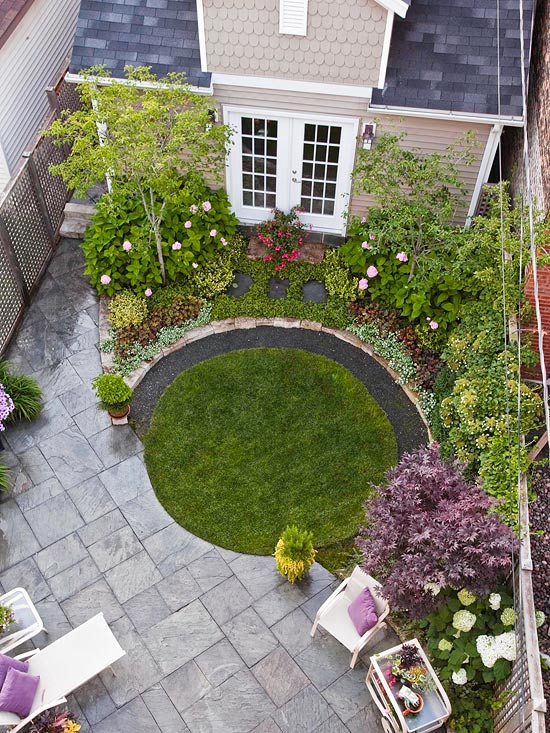
When choosing tools for mowing, edging, repairing, aerating, and topdressing, durability is an important factor, along with ease of maintenance, convenience, and safety features. Select the right type of equipment for the size of your lawn:
Small Lawns -- Under 4,000 square feet
Homeowners can accomplish most of these maintenance jobs with a small assortment of hand tools. If you prefer the quiet and enjoy the exercise, hand tools also will save money. A manual mower, broadcast seeder, edger, and aerating tool work just fine. Use a lawn rake to spread organic material for topdressing in the fall or spring, and use hand grass clippers to clean up weedy patches along walls and fences.
Medium Lawns -- 4,000 to 10,000 square feet
Hand tools just aren't enough for this size of lawn. A powered rotary mulching mower is faster, and a self-propelled version is easier. Fall mowings with this type of mower also provide your lawn with an organic topdressing -- chopped leaves -- if you have deciduous trees on your property.
Large Lawns -- Over 10,000 square feet
More sophisticated equipment is require for this size. A large powered rotary mulching mower can do the job, but a riding mower may be more appropriate. The powered core-aerator, edger, and weed trimmer are essential.
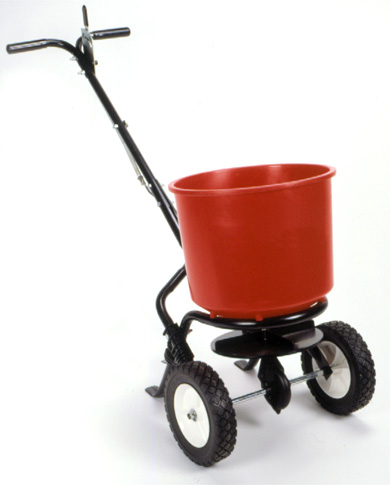
For ease in storage, look for spreaders that will hang on a wall.
Rotary Spreaders
Seed or granular is broadcasted in a wide, circular pattern. When you push the spreader, a spinner -- under the hopper that holds the material -- rotates, throwing out the seed or granules at a rate regulated by a lever on the handle. To ensure uniform coverage, make vertical and horizontal passes over the area.
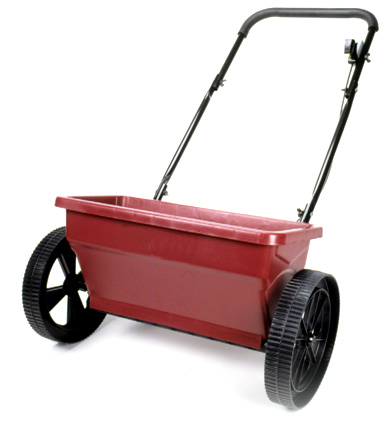
Drop Spreaders
Use this type of spreader to sow grass seed, lime, or granular fertilizer precisely. The granules or seeds flow from a rectangular hopper in measured amounts in a row along its wheelbase. An adjustment on the handle alters the amount you dispense. With each pass across the lawn, this spreader evenly distributes the material in rows. It's perfect for lawns with straight edges but requires a careful pattern of passes so you don't leave any missed strips.
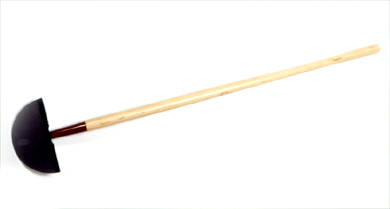
Hand Edger
This tool consists of a sharp, straight-edge steel blade mounted at the end of a long wooden or Fiberglass handle. This English-style version has a rounded semicircular blade with a broad top edge that forms a tread for your foot. Place the tool along the edge of the turf where it meets pavement, then push the blade downward to cut a neat border.
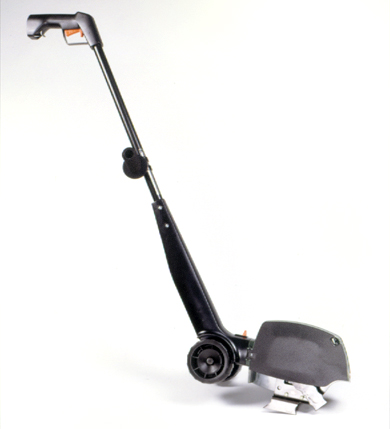
Electric-Powered Edger
This is the most efficient way to edge long stretches of lawn along walks and driveways. If you have a large property or a lot of lawn that you want to keep perfectly edged, this is the tool for you. When using a powered edger, you want to be aware of where any shallowly buried electric or water lines may lie -- a consideration if you have an in-ground irrigation system for the lawn. You don't want to cut any lines accidentally.
Electric-powered edgers are available in corded and battery-powered models. Before choosing one, consider the length the electric cord would have to be to reach the nearest electrical outlet from the farthest area you will be edging.
Electric-powered edgers are available in corded and battery-powered models. Before choosing one, consider the length the electric cord would have to be to reach the nearest electrical outlet from the farthest area you will be edging.
For ease in storage, look for spreaders that will hang on a wall.
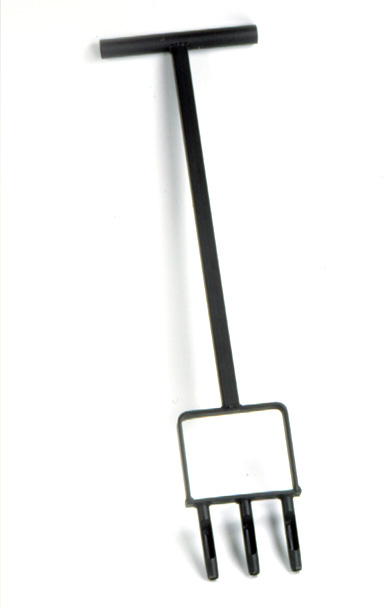
Hand Core-Aerators
This tool has two or more hollow tines connected by a narrow, steel bridge that serves as a foot plate. A waist-high steel handle, topped by hand grips, attaches to the bridge. When you press your foot against the steel bridge, the 6-inch-long tines penetrate moist turf and fill up with a core of soil. Then when you withdraw them, each one leaves a narrow hole in the turf that admits air and moisture to the root area. Each time you press the tines into the turf, a soil plug pops out the top and lands on the lawn where it decomposes in the rain.
Power Core-Aerators
These machines are ususally something homeowners rent, not buy. On medium-sized lawns, you're better off renting a power core-aerator to do the job properly. To save money, consider splitting the cost of a weekend rental with a neighbor.
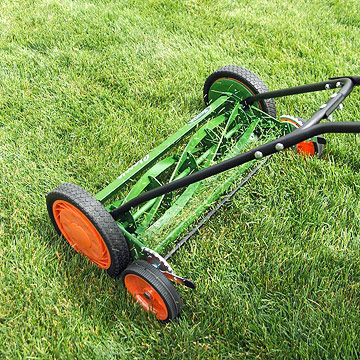
For the healthiest grass and most uniform cut, mow the lawn when it is dry. When it is damp with early-morning dew or wet from rainfall, blades don't cut cleanly, clippings clump, and any existing fungal disease will be tracked onto healthy lawn areas.
Manual or Reel Mowers
The old-fashioned lawn mower has been updated for modern times. It's now made of lightweight but sturdy materials -- most models feature pneumatic tires, easy blade-height settings, and handle-length adjustment. The horizontal blades on this type of mower always have given a superior cut. They are mounted on a reel that's geared within the wheel assembly, and they slice the grass against a lower, rigid bar. Spectacularly quiet and, of course, pollution-free, these manual mowers are especially useful for small lawns.
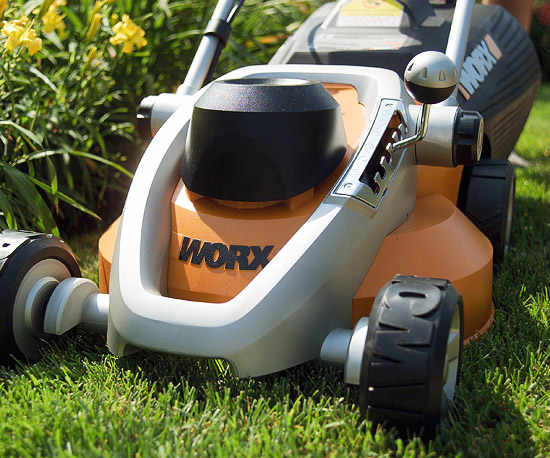
Walk-Behind Power Mowers
A gasoline- or electric-powered rotary lawn mower is appropriate for lawns over 4,000 square feet. (Some battery-operated models are available also, with capacity ton cut up to 2/3 acre on one charge.) If the lawn is configured as a large expanse, self-propelled models are particularly helpful. Today almost all power lawn mowers are designed as mulching mowers with a special blade and higher bell that suspends clippings long enough to be cut several times before they fall back into the grass as a mulch.
Riding Mowers
The newest in gas or electric powered convenience offers cruise control, joystick steering, zero turning radius (meaning you can turn 360 degrees in one spot), and even cup holders. Most can pull a cart, which is useful for mulching and other gardening applications. Larger models often have enough power to handle areation, tilling, and snow-removal attachments, though residential models with the widest mowing decks (up to 48 inches) may have trouble clearing gates in a fenced area.
Self-Directed Electric Mowers
These mowers either follow a predetermined path along cables buried in the lawn or stay within an electronic or physical border, cutting the grass while you do other things. Some models have a recharging/docking station where the unit goes when battery power is low. At least one model is solar-powered.
Get help selecting the right mower for you.
There are some instances, however, when it's really handy to have a bag attachment for your mower. For example, before you overseed a lawn, mow closely and catch the clippings so you don't have to rake them up to expose the bare soil. Moreover, if annual weeds, such as crabgrass, have formed seeds, a bag attachment will catch the seed heads along with the clippings and prevent self-seeding; throw the contents into the trash.
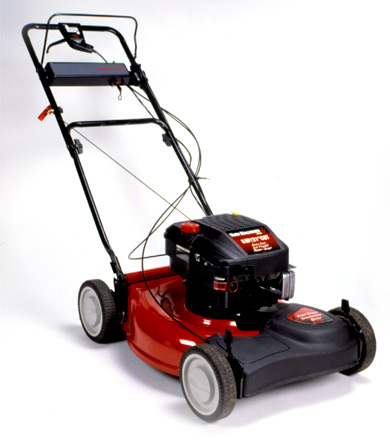 Power mower
Power mower
For the healthiest grass and most uniform cut, mow the lawn when it is dry. When it is damp with early-morning dew or wet from rainfall, blades don't cut cleanly, clippings clump, and any existing fungal disease will be tracked onto healthy lawn areas.
Copyright © www.100flowers.win Botanic Garden All Rights Reserved